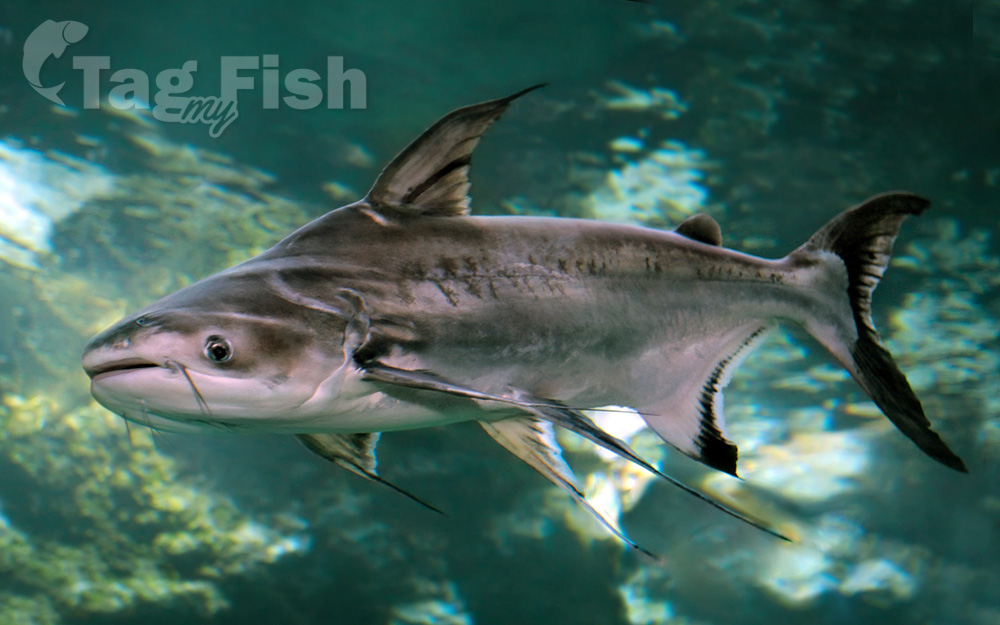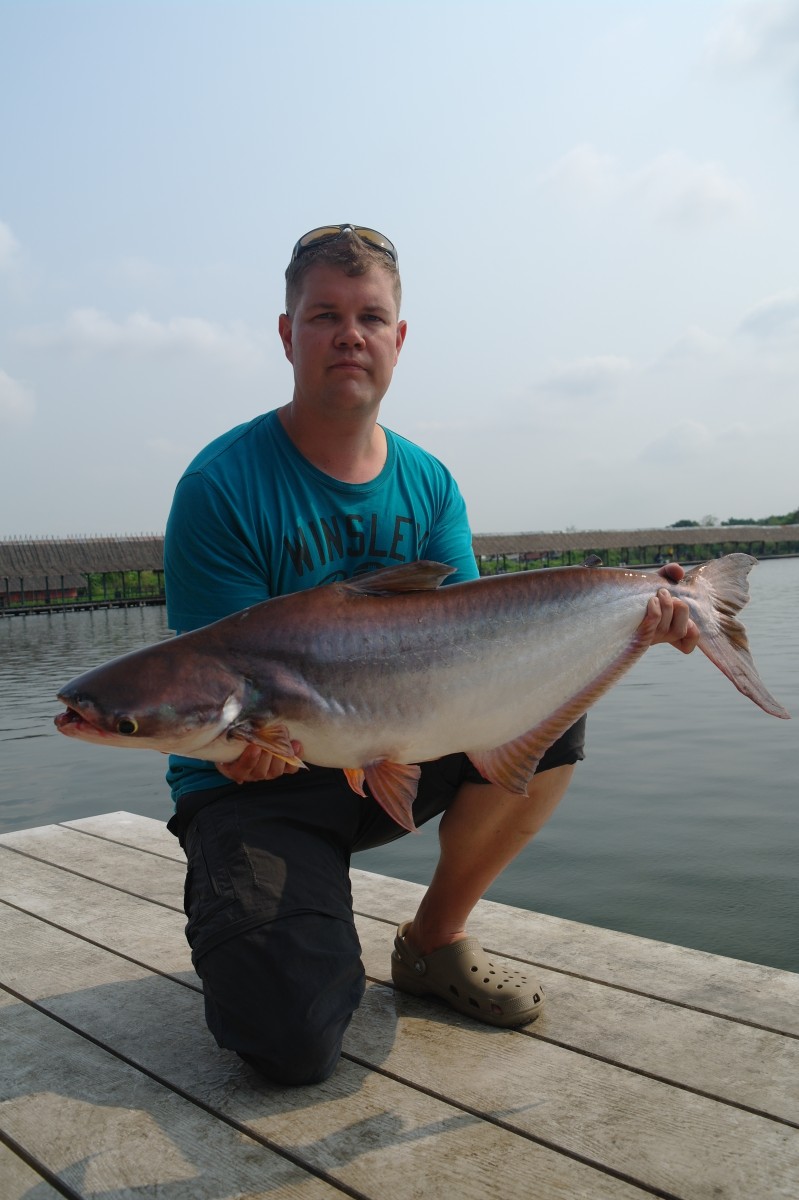Iridescent shark catfish
(Pangasianodon hypophthalmus)

Classification
The iridescent shark, iridescent shark catfish or tra catfish (Pangasianodon hypophthalmus) is a species of shark catfish (family Pangasiidae) native to the rivers of Southeast Asia. Despite its name, it is not a shark. It is found in the Mekong basin as well as the Chao Phraya River, and is heavily cultivated for food there.
The meat is often marketed under the common name swai. It has also been introduced into other river basins as a food source, and its striking appearance and iridescence have made it popular with fishkeeping hobbyists, among whom it is also known as the Siamese shark or sutchi catfish.[ The swais omnivorous diet consists of crustaceans, other fish, and plant matter.
Description
Adults reach up to 130 cm (4.3 ft) in length and can weigh up to a maximum of 44 kg (97.0 lb). They have a shiny, iridescent color that gives these fish their name. However, large adults are uniformly grey. The fins are dark grey or black. Juveniles have a black stripe along the lateral line and a second black stripe below the lateral line.
Distribution and habitat
Iridescent sharks originate from the large rivers Chao Phraya and Mekong in Asia, though they have been introduced into other rivers for aquaculture. They are freshwater fish that natively live in a tropical climate and prefer water with a 6.5–7.5 pH, a water hardness of 2.0–29.0 dGH, and a temperature range of 22–26 °C (72–79 °F). They prefer large bodies of water similar to the deep waters of their native Mekong river basin.
The iridescent shark is a migratory fish that in most regions moves upstream to spawn during the flood season while the waters are high and returns downstream to seek rearing habitats when the river water levels recede. The dates of the migrations vary depending on the river system. In the Mekong river basin, they migrate upstream in May to July and return downstream during September through December. South of the Khone Falls, upstream migration occurs in October to February, with its peak in November to December; here, it appears to be triggered by receding waters at the end of the flood season.
In August 2015, an environmental group in Santander, Colombia, confirmed that iridescent sharks had been found in one of the tributaries that feed into the Magdalena river, having been accidentally introduced from illegal farm fisheries in the area. The find has caused alarm amongst the scientific community and government officials, as the Magdalena river is home to over 200 native fish species, 35 of which are endangered.











